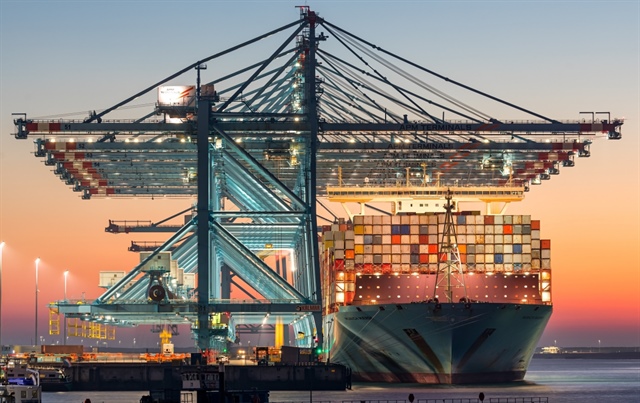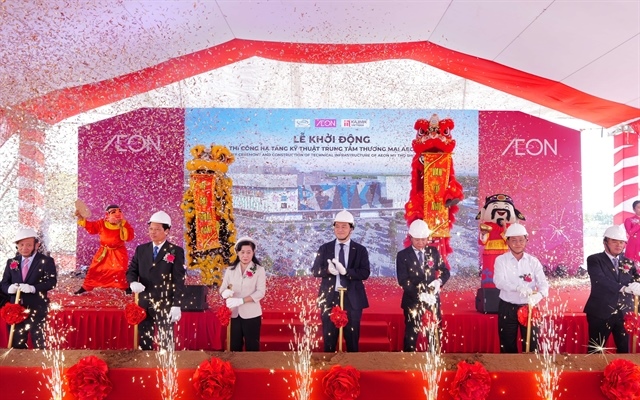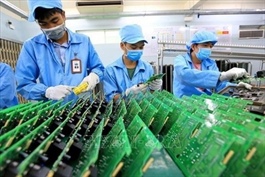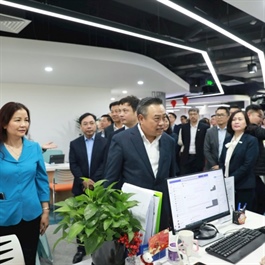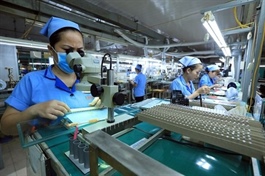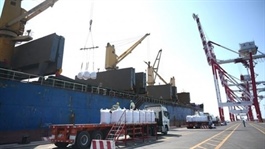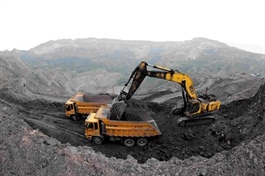R&D, human resources important for Việt Nam to climb value chain
R&D, human resources important for Việt Nam to climb value chain
As Việt Nam emerges as a destination for investments by multinational enterprises (MNEs) in the global trend of diversifying supply chains, it becomes critical for domestic enterprises to enhance competitiveness through R&D and human resource training to become an important part of the global value chain.

Automobile parts manufactured at PIM Vina in Nam Định Province. To participate more deeply in the global supply chain, Vietnamese businesses need to drastically change their thinking to meet MNEs' requirements. — VNA/VNS Photo Vũ Sinh |
Phùng Anh Tuấn, deputy director of electronic assembly company Manutronic Việt Nam, said that the global production shift is bringing not only opportunities but also challenges.
For the electronics industry, the door is widening for domestic enterprises to participate deeply in global value chains, expand production and create more jobs, he said.
However, domestic enterprises are facing challenges as MNEs have high requirements in technology, quality and optimisation, as well as reasonable cost, fast turnaround and delivery. “Việt Nam needs to have high-quality human resources to be able to receive technology transfers from MNEs,” he said.
According to Trương Thị Chí Bình, Vice Chairwoman of Việt Nam Association for Supporting Industries, in the manufacturing industry, domestic enterprises are mostly of small and medium sizes, operating in supplying components for automobile, electronics and motorbike industries.
For example, in the aviation industry, Vietnamese enterprises are capable of manufacturing several small single parts for tier suppliers of Boeing, but it is not simple to participate in the global aviation supply chain, Bình said.
Việt Nam still has some weakness in operation and machine-based production, she said.
Bình, however, pointed out that Việt Nam has advantages in production stages which require the combination of machinery and workers’ skills. For example, Việt Nam’s electrical wires, which require a combination of machinery and human skills in production, are exported widely to the global market.
“Việt Nam needs to make preparations for a long journey,” she said, adding that India and Malaysia started to build strategies to develop aerospace industry 30 years ago, starting from training engineers to researching technology trends.
Nguyễn Thị Vân Anh from Systech Trading and Technology Joint Stock Company said Việt Nam is attracting an influx of foreign direct investment, creating opportunities for domestic enterprises to become suppliers of MNEs. However, local procurement rates remain low, only around 30-40 per cent, demonstrating significant challenges ahead for the supporting industry.
“To participate more deeply in global supply chains, Vietnamese businesses need to drastically change their thinking to meet MNEs’ demand,” Nguyên Hoàn Vũ, general director of KORI Beauty, said.
Enterprises should invest 10-20 per cent of resources in research and development to be able to produce products with high technology content, he said, adding that enterprises should also apply international standards to improve professionalism and build trust.
According to Phạm Tuấn Anh, Deputy Director of the Ministry of Industry and Trade’s Industry Department, the capacity of domestic enterprises remains limited. “When a MNE invests in Việt Nam, it really needs capable domestic satellite enterprises as suppliers to reduce costs in the production process. Limited capacity of domestic enterprises is a weakness.”
He said that Việt Nam’s supporting industry is still at the low added value section of the value chains. Enterprises have not paid adequate attention to R&D, and the linkage between foreign direct investment enterprises and domestic ones remains weak.
Updates from the Ministry of Industry and Trade showed that around 30 per cent of enterprises in the supporting industry of Việt Nam participate in global supply chains.
The ministry has proposed amendments to Government Decree 111/2015/NĐ-CP about policies to develop the supporting industry. There are about 5,000 enterprises operating in the supporting industry in Việt Nam.




